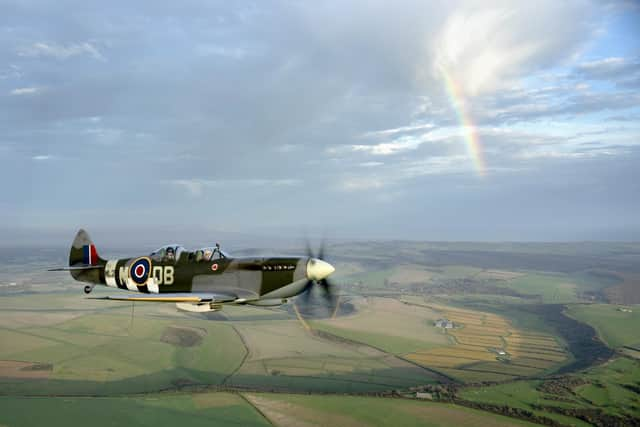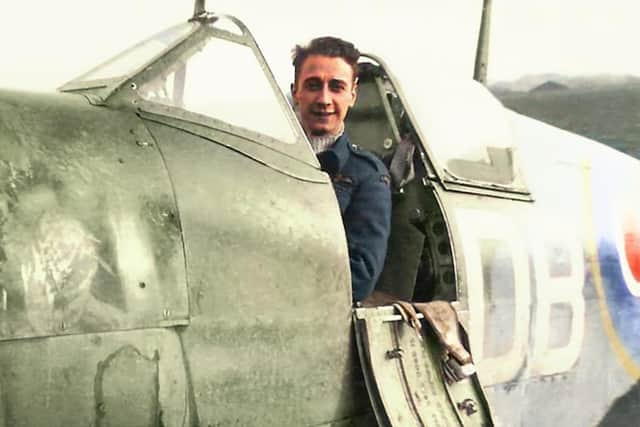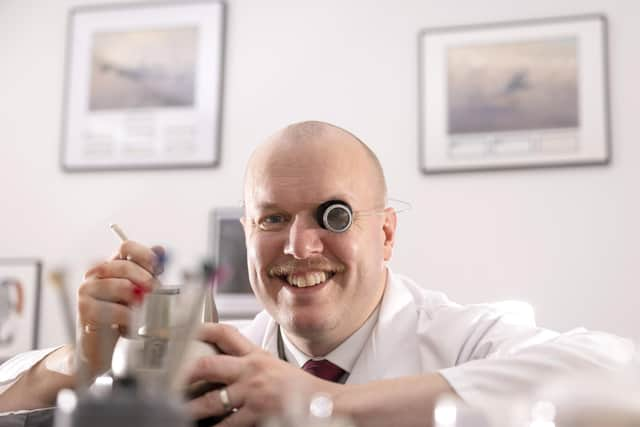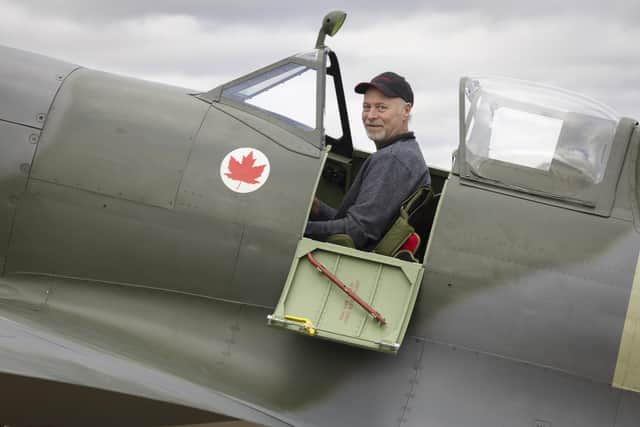Iconic Spitfire takes to the skies again after £3m restoration by Derbyshire aircraft enthusiast
and live on Freeview channel 276
Graham, from Carnfield Hall, Alfreton, brought the remains of ML295 back from France to the historic Biggin Hill airfield in Kent.
It flew again for the first time earlier this year, after a £3m restoration.
Advertisement
Hide AdAdvertisement
Hide Ad“The tail-section was completely missing and many bits were unusable but we managed to use some of the original airworthy-parts including the cockpit-surround, inboard flaps, gear selector, some of the gauges and parts of the undercarriage,” said Graham.


Nearly 80 years since it was shot down over northern France, the iconic aircraft has been painstakingly restored.
Graham, a vet by profession, had a passion for flying and he never gave up on his ambition to own a Spitfire.
He bought other planes – includng a 1942 Tiger Moth and Maule – before eventually taking the plunge to buy one in 2017.
Advertisement
Hide AdAdvertisement
Hide AdGraham funded his purchase after selling a stake in his business and has been ‘pouring’ money into the restoration ever since.


The project itself took place at Biggin Hill – where the world’s biggest collection of Spitfires are – with Graham playing an enthusiastic and active role ahead of its eventual return to the skies.
Among the parts of the aircraft that could not be used were several sections of wing. These were given to Colin Andrews, a cousin of a friend who runs The Great British Watch Company, and he had the idea to craft them into watch parts.
“I was looking for an interesting project so I was thrilled to be given some bits of the wing - one piece has a shell-hole in it. But I’ve managed to find enough good parts to make the dials and hands for nearly one hundred watches - it’s the first time parts from a Spitfire have been used as an integral part of a watch,” said Mr Andrews.
Advertisement
Hide AdAdvertisement
Hide Ad“The watches are called ‘The Few’. And ‘Harold Kramer’ and the names of the other eleven pilots who flew the Spitfire are engraved on the back of each one.


“I had no interest in aircraft before starting this project - although I’ve always liked history,” added Colin. “But I’ve really loved researching the history of this aircraft and finding out as much as I can about the pilots. I found Harold’s son by looking on Google images for people with the same second name in Canada who looked similar to the photo I had of him .
“I’ve invited some of the families of the pilots over from Canada to see and fly in the Spitfire today and tomorrow. Some of my customers are coming too. The first batch of fifteen watches sold-out in three days.”
After D-Day the Mk 9 Spitfire ML295, assigned to the Royal Canadian Air Force 411 ‘Grizzly Bears’ Squadron, moved from Biggin to France where, on July 30, 1944 it crashed in Normandy. The pilot, Harold Kramer survived, but the aircraft, which was then used as target practice by the Germans, never flew again. After the war the cockpit and many other parts went on display in a French museum near to the crash site.
Advertisement
Hide AdAdvertisement
Hide AdFirst to fly in ML295 was Harold’s nephew Jeffrey Pietz, 59, from Ontario. He said: “We knew my uncle’s plane was in France and had been planning to see it for years. Then we heard it had been restored and got to hear about the watches. We’ve been on a tour of Europe over the last few weeks and this has been the best bit.”


“‘The Few’ retails for £12,000. It comes in a display box made from the same wood as Spitfire propellers. All parts are made in the UK, with a choice of movement - modern or vintage - a leather strap, handmade silver buckle, matching cufflinks - also made from original wing parts, and a silk ‘escape map’ - a replica of those issued to Spitfire pilots. I’m also writing a book about this and other Spitfires, which I’ll include,” explained Colin.
Two other family members, who arrived from Canada, also flew in the Canadian Air Force liveried Spitfire. Seventy-year-old Wilson Harold Nixon was second to take a seat in the - now two-seater - fighter. His father Flight Lieutenant Harold Joseph Nixon, who also survived the war, flew ML295 from France and was awarded the Distinguished Flying Cross.
Eighty-one-year-old, Larry Tracey’s father-in law, Flight Lieutenant Bob Cooke flew the Spitfire from Biggin Hill before being killed working as a helicopter pilot for Canada Post after the war.
Within the next year, Graham is planning to relocate his Spitfire to Leeds where he will offer flight experiences.